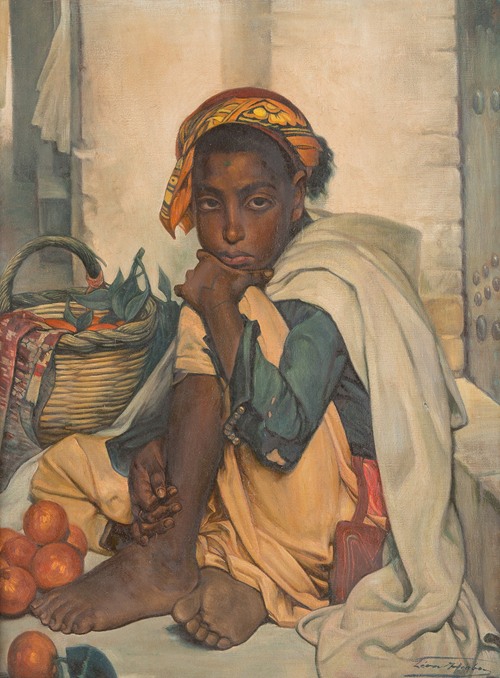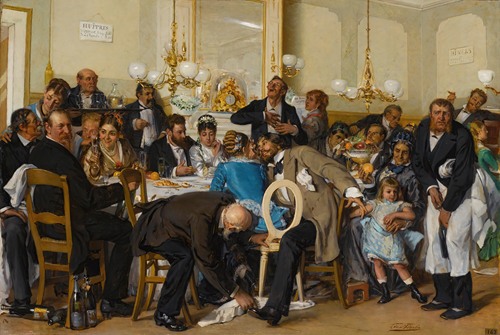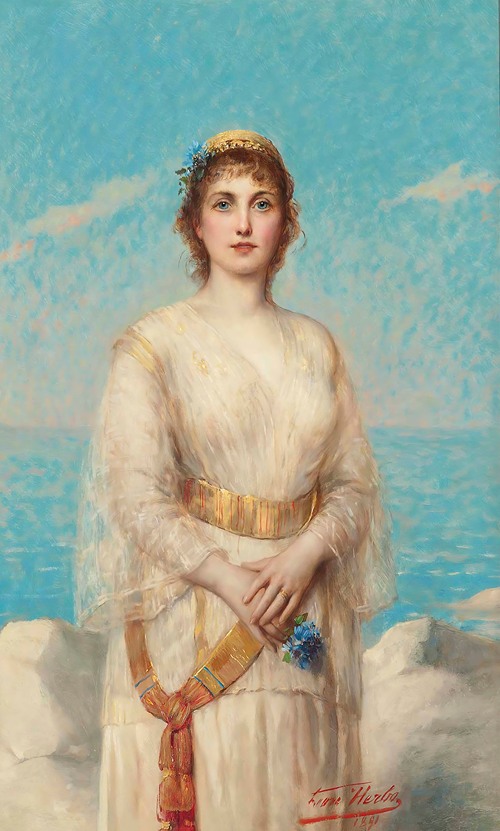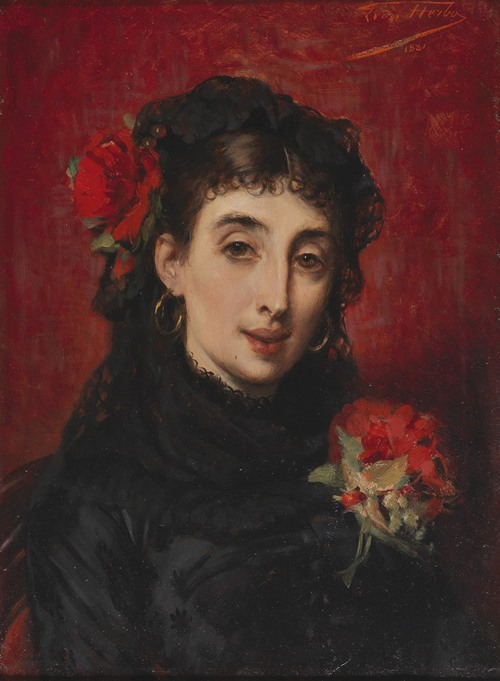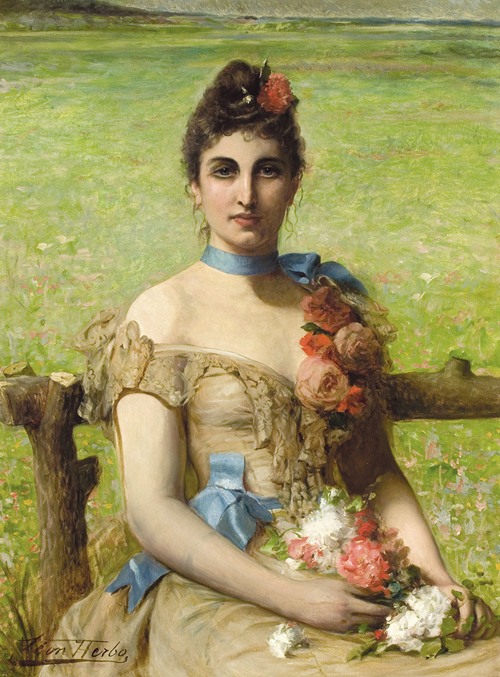
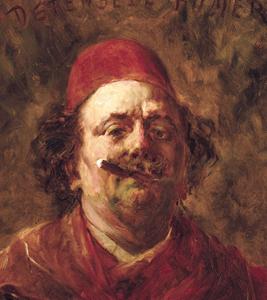
Léon Herbo was a Belgian painter; best known for his portraits of women in casual poses. He also painted genre scenes; many with Orientalist themes. His wife often served as his model.
He studied at the Académie des beaux-arts de Tournai [fr] with Léonce Legendre [fr], the Académie's Director, and completed his studies at the Académie Royale des Beaux-Arts in Brussels from 1869 to 1874. He was ranked first in the preparatory competition for the Prix de Rome; travelling throughout Germany, Italy and France before settling in Brussels.
His first formal exhibit came in 1875, at the Salon van Brussel [nl], and he would continue to hold showings there until the end of the century. The following year, he was one of the co-founders of "L'Essor", a progressive group that rebelled against the conservative teachings of the Academies.
As well as exhibiting in Belgium, he participated in showings in Paris, at the Salon, in Munich and Berlin. He obtained honorable mention at the Exposition Universelle (1889). That same year, he and the animal painter, Alexandre Clarys [nl], collaborated on creating a monumental canvas depicting the meeting of Queen Marie Henriette with the military squadron named after her.
He was very prolific and created numerous works for commercial use. Many were designed for reproduction by chromolithography, or the decoration of porcelain. He charged a fixed price for his portraits, and guaranteed that they would resemble the subject. Some of them were posthumous; created from photographs. He is known to have painted at least 1,000 altogether.
Most of his paintings are in private collections. Some may be seen at the Royal Museums of Fine Arts of Belgium, the Museum of Painting and Sculpture in Kortrijk, and the Musée des Beaux-Arts Tournai.
More Artworks by Léon Herbo
